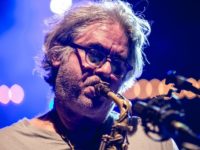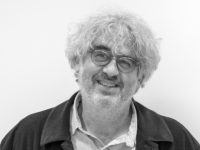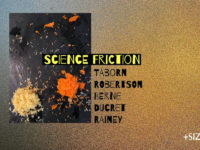Perhaps the most convenient way to organize the long, adventurous history of Tim Berne’s oeuvre is to put them in the context of the various bands he’s started up and led or co-led (currently, that’s Snakeoil). Oftentimes one band will morph into another. For instance, if we would start with roughly the 2010s and go back, Sun of Goldfinger is Prezens minus keyboardist Craig Taborn and Ches Smith replacing drummer Tom Rainey. Prezens is Hardcell plus David Torn. Hardcell is Science Friction minus guitarist Marc Ducret. Big Satan is Prezens minus Torn and Taborn, plus Ducret. Swap out Ducret for bassist Drew Gress and you have Paraphrase. Bloodcount was active around the time of Big Satan and Paraphrase but was a completely different animal with bassist Michael Formanek, clarinetist Chris Speed and drummer Jim Black. I could keep going further back into the history of Berne bands, but you get the point.
During that Bloodcount period of the 90s, Berne led a date he called inSOMNIA — key caps anarchy and all — that doesn’t represent any going concern band; he’s actually done these aberrations many times. But this one-off encounter is easy to contextualize because it was performed by Bloodcount enhanced by a trumpet (Baikida Carroll), violin (Dominique Pifarély), cello (Erik Friedlander) and Berne’s erstwhile guitarist Ducret, playing exclusively acoustic guitar here.
The expectation here is that the supplemental quartet pushes the Bloodcount quartet in a chamber direction, but expectations are a losing game with the portentous composer and saxophonist Berne, who has always chosen his own path. Throughout his career, though, that path has been informed by a few others, most notably his ol’ mentor the late Julius Hemphill, which could have been a factor in employing a cello player in Friedlander, much as Hemphill had Abdul Wadud at his side for much of his career.
Only two Berne originals make up the whole album, each running about half an hour a piece. In that sense, these long pieces could be regarded as jazz symphonies, but Berne applies his small ensemble principles to them and we discover just how utterly scalable his ideas truly are.
After a courtly start, the first thing standing out on “The Proposal” is Carroll’s trumpet and where you might hear a piano, you instead have an active rhythm acoustic guitar from Ducret, who actually acts as a counterpoint to Formanek. The rest of the band returns, mostly to supplement Ducret. We hear those trademark Berne note clusters so many times, but it’s a fresh revelation to hear them as performed by a larger group that includes three string players (well, actually four when you count Ducret). Two of those string players — Friedlander and Pifarély — are granted their own space to spar against each other. As Berne leads another knotted motif, he takes advantage of the extra resources at hand to layer in more harmonic counterparts, making this a rather rich tapestry. Even when all these different parts break down into improvisation, they maintain a hold on Berne’s vision. That vision stays intact even when it’s basically just Ducret and Formanek sketching it out, as they do for several minutes in one stretch. In another, the horns play drawn out notes and eventually Black slips a groove underneath it that the strings lock into.
Ducret opens “oPEN, cOMA” with oblique plucking, strumming and knocking that gradually gets overwhelmed by a symphonic haze that quickly dissipates into a strings conference with Black and Formanek marking the rhythm parameters. From a diffused state, the musicians begin to converge into a unified form that with Speed tootling his clarinet, briefly begins to resemble 1930s sweet bands but through the modern, complex lens of Berne. The interlude with Ducret and Carroll intentionally or not inject a touch of flamenco and Carroll’s maximal trumpet continues as the consortium of musicians playing around him shifts. Eventually, the leader will have statements to make on his own and sure enough, he makes craggy ones on a baritone sax, with Black and Formanek forming a very sympathetic rhythm unit. As he is pushes against the guardrails of musical sanity, the rest of the band eases back in with another one of his tangled charts and reels him back.
inSOMNIA was recorded in 1997, released in 2011 but just recently made available through Tim Berne’s Screwgun label. Purchase a download right here.
- How Norah Jones Continued to Push Against Convention With ‘The Fall’ - November 23, 2024
- McCoy Tyner and Joe Henderson – ‘Forces of Nature: Live at Slugs’ (2024) - November 21, 2024
- Lydia Salnikova, “Christmas Means a Different Thing This Year” (2024): One Track Mind - November 19, 2024




